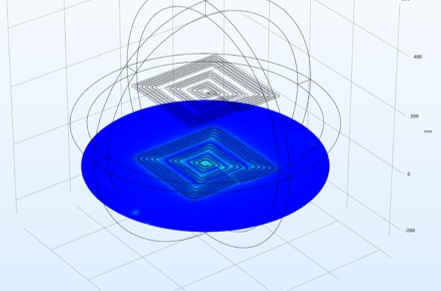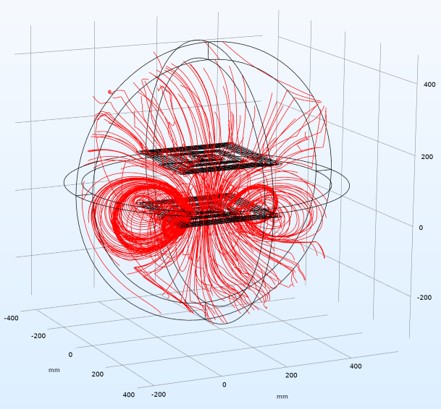Magnetic Resonance Wireless Drone Charging


Overview:
With drone technology advancing quickly, drone applications continue to grow. Being one of the major limiting factors, flight time should be extended so drones can continue their mission without traditional charging interruptions, where drones would abandon the mission and have to land to charge. My capstone project group aimed to solve this by providing long distance wireless charging through magnetic resonance technology. Although the project was cut short by the Covid-19 pandemic, we made significant progress in arranging the schematics, simulations, and developing drone attachment designs. My role in the project was to complete the coil simulation and optimization.
Purpose:
- Use a multiphysics simulation software (Comsol) to simulate magnetic resonance power transfer between a transmitter and receiver coil
- Optimize coil design for long distance power transfer and use these optimized parameters to manufacture coil
Challenges:
- Learn a new software and debug simulation and provide results within deadlines
- Create a simulation that would provide accurate results, but use assumptions that were valid


Process:
- Coil modeled as a perfect conducting surface
- Air sphere modeled encompassing the two coils and infinite boundary conditions on the outer surface of the air sphere
- Virtual circuits attached to inputs and outputs of coils
- Single coil simulations to optimize coil quality factor using coil size and coil turns as variable parameters (top figure)
- Two coil simulations to optimize power transfer efficiency using trace thickness as variable parameter in parametric sweep (bottom figure)




Outcome:
- 31.4 x 31.4 cm (30 + 2*trace width) coil with 11 turns as optimal
- Achieves over 40% efficiency at 30 cm between coils
Skills Learned:
- Comsol simulation techniques
- Magnetic resonance and coil concepts